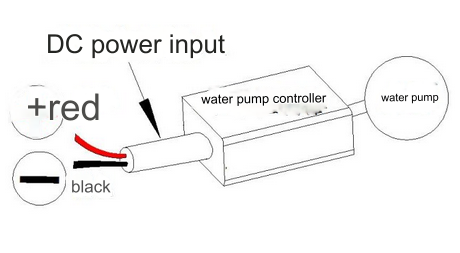Water pump speed regulation method and selection
The speed regulation mode and selection of water pumps are two important aspects in the operation and management of water pumps. The following are detailed answers to these two aspects:
1. Speed regulation mode of water pumps
There are mainly the following speed regulation modes for water pumps:
Variable frequency speed regulation
Principle: The speed of the motor is adjusted by changing the power frequency of the motor, thereby adjusting the flow and pressure of the water pump. Since the speed n of the asynchronous motor is proportional to the power frequency f, speed regulation can be achieved by changing the power frequency.
Advantages: It has the advantages of wide speed regulation range, high precision, low energy consumption, and easy automatic control. The variable frequency speed regulator can also have the functions of frequency regulation and voltage regulation to maintain the maximum torque of the motor unchanged.
Application: It is the most commonly used and efficient way of speed regulation of water pumps at present.
Hydraulic coupling speed regulation
Principle: It is installed between the motor and the water pump, and the speed of the driving pump wheel is adjusted by changing the amount of medium (such as turbine oil), thereby achieving stepless speed regulation.
Features: The structure is relatively simple, but the speed regulation efficiency may be slightly lower than that of variable frequency speed regulation.
Cascade speed regulation
Principle: This is a speed regulation device for wound-rotor asynchronous motors, which changes the speed of the motor by introducing additional potential in the motor rotor circuit.
Application: Although it is relatively special, it can also achieve effective speed regulation in certain specific occasions.
Other speed regulation methods
Such as DC speed regulation motors, etc., but due to high cost or complex technology, there are relatively few practical applications.
2. Selection of water pumps
When choosing a water pump, you need to consider the following aspects:
Use environment
Confirm the use environment, such as ambient temperature, humidity, atmospheric pressure, and whether the air is corrosive.
Fluid properties
Find out the fluid properties of the pump, including temperature, water quality (such as particle diameter and content), corrosiveness, toxicity, and whether it is combustible and explosive.
Component material
Select the material of each component of the pump according to the fluid properties to ensure the corrosion resistance and safety of the pump. Communicate with the pump manufacturer if necessary.
Use requirements
Select the appropriate type and number of pumps according to actual use requirements. For example, a metering pump can be selected when metering is required; a vortex pump or a reciprocating pump can be selected when the flow rate is small and the head is high; an axial flow pump or a mixed flow pump can be selected when the flow rate is large and the head is low.
Performance and parameters
When selecting a water pump, you also need to pay attention to its performance and parameters, such as flow rate, head, efficiency, etc. The flow rate is generally selected as 1.1 times the maximum flow rate or normal flow rate; the head needs to be enlarged by 5% to 10% to ensure performance margin.
Energy saving and environmental protection
On the premise of meeting the use requirements, give priority to water pumps with good energy-saving effects, such as variable frequency speed regulation water pumps. At the same time, pay attention to the noise and vibration control of the water pump to ensure its environmental performance.





